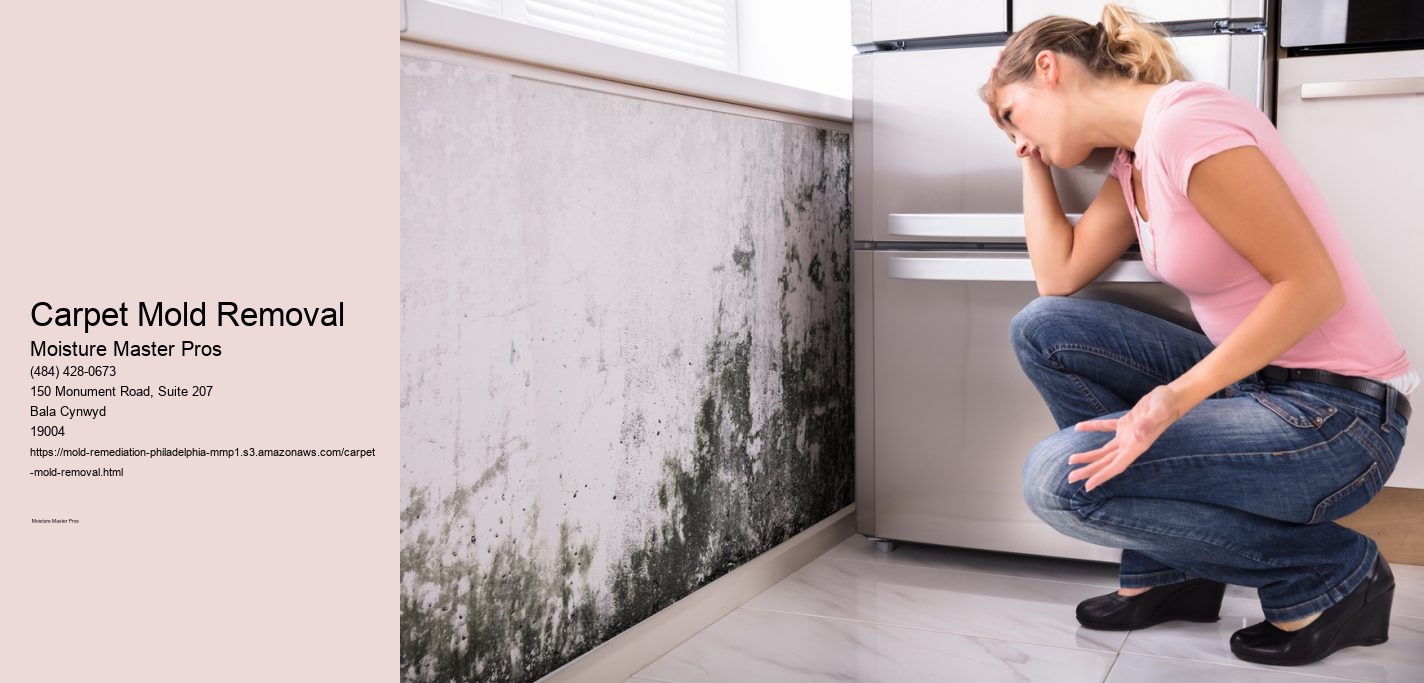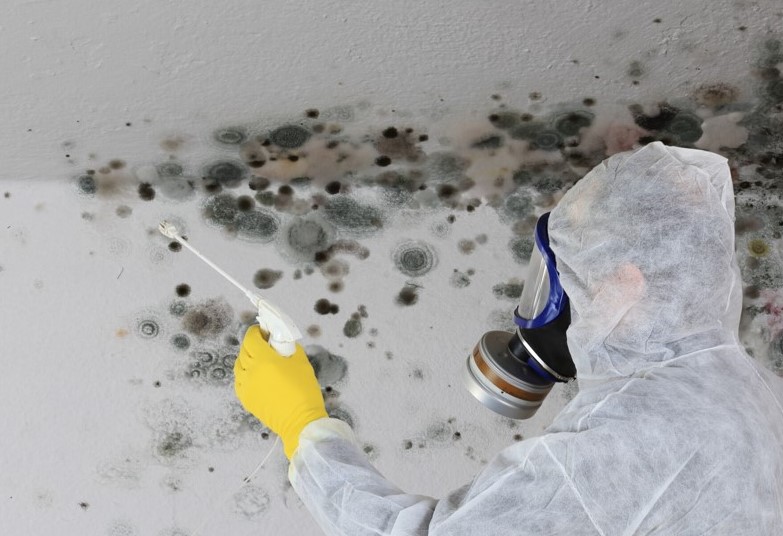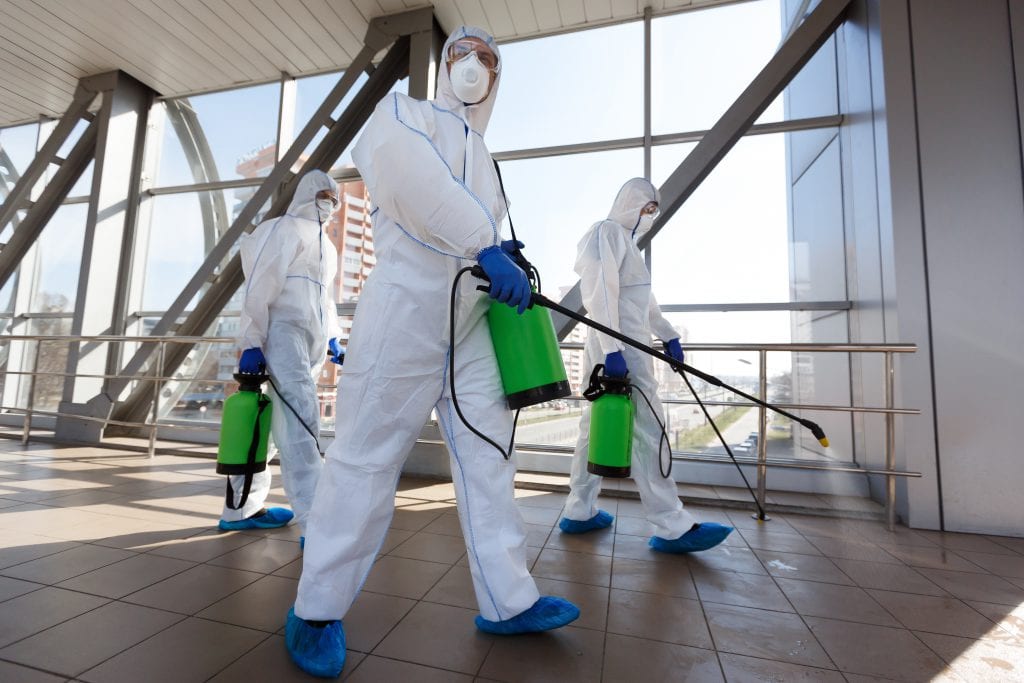

Mold Inspection and Testing
Professionals can conduct thorough inspections and tests to identify the type and extent of mold growth in your home. They use specialized equipment to detect mold that might not be visible to the naked eye.
Remediation Process
The remediation process typically involves containing the affected area, removing moldy materials, cleaning and disinfecting surfaces, and addressing the source of moisture to prevent future growth. Professionals follow strict protocols to ensure safe and effective mold removal.
Conclusion
Preventing mold growth is a vital part of maintaining a healthy home. By understanding the causes of mold and implementing these expert tips, you can keep your home mold-free and protect your family's health. And remember, if mold does appear, professional remediation is the best way to ensure it’s thoroughly and safely removed. Stay vigilant, stay dry, and stay healthy!
The Importance of Post-Remediation Testing for Your Home
When mold invades your home, it's not just an unsightly issue; it poses serious health risks. Once remediation is done, ensuring your home is safe involves more than a cursory glance. This is where post-remediation testing becomes crucial. Let's dive into why this step is essential for your home's health and your peace of mind.
Understanding Mold Remediation
What is Mold Remediation?
Mold remediation is the process of removing mold and addressing the underlying causes of mold growth.
The Dangers of Mold
Mold can cause a range of health issues, from allergies and asthma to more severe respiratory problems. Prolonged exposure can lead to chronic health conditions, especially in vulnerable individuals such as children, the elderly, and those with compromised immune systems.
The Mold Remediation Process
The process typically involves containment of the affected area, removal of contaminated materials, cleaning and sanitizing, and repairing any issues that contributed to the mold growth. It's a thorough process designed to eliminate the problem at its source.
What is Post-Remediation Testing?
Definition and Purpose
Post-remediation testing, also known as clearance testing, is conducted after the remediation process is completed. Its purpose is to verify that the mold remediation was successful and that the indoor environment is safe for occupancy.
How It Differs from Initial Testing
Initial testing identifies the presence and type of mold, whereas post-remediation testing confirms that the remediation efforts were effective and that mold levels are within acceptable limits.
Why Post-Remediation Testing is Essential
Ensuring Effectiveness of Remediation
Without post-remediation testing, there's no way to be certain that all mold has been removed and that the underlying issues have been properly addressed.
Health and Safety Concerns
Mold spores can linger in the air and on surfaces, posing ongoing health risks if not completely removed. Post-remediation testing helps ensure that the air quality is safe and that there are no hidden mold colonies that could cause future problems.
Preventing Future Mold Growth
Effective remediation combined with thorough testing helps prevent the recurrence of mold. By confirming that the conditions conducive to mold growth have been resolved, you reduce the likelihood of facing the same issue again.
The Process of Post-Remediation Testing
Visual Inspection
A visual inspection is the first step, ensuring that there are no visible signs of mold. This includes checking previously affected areas and surrounding spaces.
Moisture Measurement
Moisture meters are used to detect hidden dampness that could promote mold growth. Ensuring that moisture levels are within safe limits is critical for preventing future problems.
Air Quality Testing
Air samples are taken to measure the concentration of mold spores in the indoor environment. This helps to determine if the air quality meets health and safety standards.
Surface Sampling
Surface samples are collected from various areas to check for residual mold. This involves swabbing surfaces and analyzing the samples in a lab to confirm that mold has been effectively removed.
Who Should Conduct Post-Remediation Testing?
Choosing a Certified Mold Inspector
It's important to hire a certified mold inspector to conduct post-remediation testing. They have the expertise and tools necessary to perform thorough testing and provide accurate results.
DIY vs. Professional Testing
While DIY testing kits are available, they often lack the accuracy and comprehensiveness of professional testing. Hiring a professional ensures reliable results and peace of mind.
How to Prepare for Post-Remediation Testing
Steps to Take Before the Test
Before the test, make sure that all remediation work is completed and that the area has been thoroughly cleaned. Avoid activities that could stir up dust or mold spores, and ensure the area is dry.
Common Mistakes to Avoid
Avoid rushing the remediation process or skipping post-remediation testing altogether. Home inspection Neglecting these steps can result in lingering mold problems and ongoing health risks.
Interpreting Post-Remediation Test Results
Understanding Test Reports
Test reports will indicate the presence and concentration of mold spores. Understanding these results is key to knowing if further action is needed or if your home is safe.
What to Do If Mold is Still Present
If the test results show that mold is still present, further remediation may be necessary. Consult with your mold inspector to determine the best course of action.
Costs Associated with Post-Remediation Testing
Factors Affecting the Cost
The cost of post-remediation testing can vary based on the size of your home, the extent of the remediation, and the type of tests conducted. It's important to budget for this step to ensure comprehensive mold removal.
Budgeting for Testing
Plan for the costs associated with post-remediation testing as part of your overall remediation budget.
Real-Life Examples of Post-Remediation Success
Case Study: A Mold-Free Home
In one case, a family discovered extensive mold growth in their basement. After thorough remediation and post-remediation testing, they were able to confirm that their home was safe, improving their health and peace of mind.
Testimonials from Homeowners
Homeowners who have undergone post-remediation testing often share positive feedback, emphasizing the importance of this final step in ensuring a healthy living environment.
Conclusion
Recap of Key Points
Post-remediation testing is a critical step in the mold remediation process. It ensures that all mold has been removed, the indoor environment is safe, and future mold growth is prevented.
Final Thoughts
Don't skip post-remediation testing—it's an investment in your home's health and your family's well-being. By confirming the success of remediation efforts, you can enjoy peace of mind knowing your home is truly mold-free.
How Water Damage Leads to Mold Growth and How to Prevent It
Water damage can wreak havoc on homes and businesses alike, often leading to a more insidious problem: mold growth.
Introduction
Water damage isn't just about visible flooding or leaks; it encompasses a range of issues from burst pipes to unnoticed drips. These incidents can pave the way for mold, a resilient and potentially harmful fungus that thrives in damp environments. By grasping the relationship between water damage and mold growth, you can take proactive steps to protect your property and well-being.
Understanding Water Damage
Types of Water Damage
Water damage comes in various forms, each with its own set of causes and implications. From plumbing failures to natural disasters like floods or storms, water damage can occur suddenly or develop over time, often unnoticed until significant damage has already occurred.
Common Causes of Water Damage
Plumbing Issues
Burst pipes
Leaky faucets and fixtures
Weather-Related Incidents
Floods
Heavy rains and storms
Appliance Malfunctions
Dishwasher leaks
Washing machine overflow
The Relationship Between Water Damage and Mold Growth
When water infiltrates your home or business, it creates a breeding ground for mold. Mold spores are present everywhere, but they require moisture to activate and proliferate. Within as little as 24-48 hours of water exposure, mold can begin to colonize and spread, posing serious health risks and structural damage if left unchecked.
Impact of Moisture on Building Materials
Materials such as drywall, wood, and insulation absorb water like a sponge. This moisture weakens their integrity, causing warping, swelling, and eventual deterioration if not properly dried and restored.
Timeframe for Mold Growth After Water Damage
Mold growth can start remarkably quickly after water damage occurs. Within days, visible signs may appear, accompanied by musty odors signaling mold's presence even before it becomes visible.
Health Risks Associated with Mold
Exposure to mold can lead to a range of health issues, particularly for those with allergies, asthma, or compromised immune systems. Symptoms may include respiratory problems, skin irritation, and in severe cases, chronic lung illnesses.
Vulnerable Populations
Children, elderly individuals, and anyone with existing respiratory conditions are especially susceptible to the effects of mold exposure.
Identifying Signs of Water Damage
Detecting water damage early can prevent mold growth and costly repairs. Mold-resistant paint Look for both visible and hidden signs throughout your property.
Visible Signs
Stains and Discoloration: Water stains on ceilings or walls indicate leaks or seepage.
Peeling Paint or Wallpaper: Moisture can cause paint and wallpaper to peel away from surfaces.
Hidden Signs
Musty Odors: A persistent, earthy smell could indicate hidden mold growth.
Warped or Buckled Floors: Changes in flooring texture can suggest water damage beneath.
Preventing Water Damage
Taking proactive steps to safeguard your property against water damage is essential for mold prevention.
Regular Inspection and Maintenance
Routine checks of plumbing, appliances, and roofing can catch potential issues before they escalate into significant water damage incidents.
Early Detection Systems
Installing water leak detectors and monitoring systems can provide early warnings of leaks or moisture buildup, allowing for prompt intervention.
Proper Installation and Maintenance of Appliances


Ensuring appliances are correctly installed and regularly maintained reduces the risk of malfunctions leading to water damage.
Steps to Prevent Mold Growth After Water Damage
If water damage occurs, swift action is crucial to prevent mold from taking hold.
Immediate Actions to Take
Drying Out Affected Areas: Use fans and dehumidifiers to dry wet areas promptly.
Removing Water-Damaged Materials: Dispose of irreparably damaged items to prevent mold spread.
Professional Mold Remediation
For extensive or hidden mold growth, professional mold remediation is necessary.
Hiring Certified Professionals
Qualified mold remediation specialists have the expertise and equipment to safely and effectively remove mold from your property.
Importance of Thorough Cleaning and Drying
Complete drying and thorough cleaning of affected areas prevent mold from returning and ensure a healthy indoor environment.
Long-Term Strategies for Mold Prevention
Preventing mold requires ongoing maintenance and attention to moisture control within your home or business.
Improving Ventilation
Proper airflow helps reduce humidity levels, discouraging mold growth in areas prone to moisture buildup.
Controlling Indoor Humidity Levels
Maintaining indoor humidity below 60% inhibits mold growth. Dehumidifiers can help achieve and maintain optimal humidity levels.
Insulating Pipes and Roofs
Insulating vulnerable areas such as pipes and roofs prevents condensation and potential water damage.
Conclusion
Understanding how water damage leads to mold growth is the first step in protecting your property and health. By promptly addressing water issues, implementing preventive measures, and acting swiftly if water damage occurs, you can minimize the risk of mold infestation. Remember, prevention is key to maintaining a safe and healthy indoor environment for you and your loved ones.
Understanding Black Mold: Health Effects and Remediation
Black mold, scientifically known as Stachybotrys chartarum, is a type of toxic mold that can have serious health implications if not addressed promptly and properly. In this comprehensive guide, we will delve into what black mold is, its health effects, methods of identification, remediation techniques, and preventive measures.
Introduction
Biohazard cleanupBlack mold is notorious for its dark greenish-black appearance and its association with health risks. Understanding its presence, effects on health, and proper remediation is crucial for maintaining a healthy indoor environment.
What is Black Mold?
Black mold is a type of fungus that thrives in damp, humid environments. It is often found in areas with water damage, such as leaky roofs, basements, and bathrooms. This mold releases spores into the air, which can lead to respiratory issues and other health problems when inhaled.
Health Effects of Black Mold
Exposure to black mold can cause a range of health issues, from mild allergic reactions to severe respiratory problems and even neurological issues in some cases. Common symptoms include coughing, wheezing, throat irritation, and skin rashes.
Allergic Reactions
Many people experience allergic reactions to black mold spores, leading to symptoms similar to hay fever or asthma exacerbations.
Respiratory Issues
Prolonged exposure can aggravate existing respiratory conditions like asthma, and in severe cases, cause chronic obstructive pulmonary disease (COPD).
Serious Health Risks
Individuals with compromised immune systems, such as the elderly, children, and those with chronic illnesses, are particularly vulnerable to severe health risks from black mold exposure.
Identifying Black Mold
Detecting black mold early is crucial for effective remediation. It typically appears as slimy greenish-black patches and often has a musty, earthy odor.
Conditions Favoring Black Mold Growth
Black mold thrives in environments with high humidity and moisture levels. Poor ventilation, water leaks, and flooding can create ideal conditions for its growth.
Health Risks Associated with Black Mold Exposure
The health risks associated with black mold exposure can vary depending on the duration and intensity of exposure. Immediate symptoms may include headaches, fatigue, and respiratory issues, while long-term exposure can lead to more severe health problems.
Testing for Black Mold
If you suspect black mold in your home, there are several methods for testing its presence. DIY testing kits are available, but for accurate results, it's advisable to hire a professional mold inspector who can conduct thorough testing.
Remediation Techniques

Mold remediation is required when mold growth is visible, when there is a musty odor, or when individuals experience health symptoms such as allergies or respiratory issues. If you suspect mold in your home, it's crucial to contact Moisture Master Pros for an inspection to prevent further health risks and property damage.
Mold remediation entails identifying and addressing the source of moisture that caused the mold growth, containing the affected area, removing mold-contaminated materials, cleaning and treating surfaces, and restoring the area to a healthy condition. Moisture Master Pros follows a comprehensive approach to ensure effective mold removal.
After mold remediation, regular cleaning and maintenance are crucial. Moisture Master Pros recommends using mild, mold-inhibiting cleaners, keeping your home well-ventilated, and promptly addressing any water leaks or moisture issues to prevent mold from returning.
After mold remediation, it's essential to address any moisture issues that contributed to the mold growth to prevent recurrence. Moisture Master Pros recommends regular inspections, maintaining proper ventilation, and addressing leaks or water damage promptly to keep your home mold-free.
Yes, mold remediation is necessary in Philadelphia, PA, to ensure a healthy living environment. Mold can cause significant health problems and structural damage if left untreated. Moisture Master Pros provides professional mold remediation services to protect your home and health.
The duration of mold remediation in Philadelphia, PA, can range from a few hours to several days, depending on the severity of the mold infestation and the size of the area being treated. Moisture Master Pros aims to complete the remediation process efficiently while ensuring thorough mold removal and cleanup.
Mold remediation is the process of identifying, removing, cleaning, and treating mold-infested areas to restore a healthy living environment. At Moisture Master Pros, we use specialized equipment and techniques to ensure thorough and safe mold removal, preventing future mold growth and protecting your health.
Whether you can stay in your home during mold remediation depends on the severity of the mold problem and the extent of the work being done. Moisture Master Pros will advise you based on your specific situation. In many cases, it is safe to remain in your home with certain areas sectioned off.
Mold can return if the underlying moisture problem is not addressed. Moisture Master Pros not only removes the mold but also identifies and fixes the source of moisture to prevent future mold growth.
Mold remediation is highly effective when performed by professionals like Moisture Master Pros. By thoroughly removing mold and addressing the source of moisture, we ensure long-term protection against mold recurrence and safeguard your health and property.
When choosing a mold remediation company in Philadelphia, PA, consider their experience, certifications, customer reviews, and the methods they use. Moisture Master Pros is a trusted name in the industry, known for our expertise, professionalism, and commitment to customer satisfaction.
The mold remediation process in Philadelphia, PA, typically involves several steps: Inspection and Assessment: Moisture Master Pros will inspect the property to identify mold growth and determine the extent of the problem. Containment: The affected area is contained to prevent the spread of mold spores. Air Filtration: High-efficiency air filters are used to capture mold spores from the air. Mold Removal: Contaminated materials are removed, and surfaces are cleaned and treated with antifungal and antimicrobial solutions. Restoration: Repaired and replaced materials to restore the affected area to its original condition.
Mold remediation involves several key steps, including inspection, containment, air filtration, mold removal, and restoration. Moisture Master Pros ensures each step is carried out meticulously to effectively remove mold and prevent recurrence.
The cost of mold remediation in Philadelphia, PA, can vary widely depending on the extent of the mold problem, the size of the affected area, and the complexity of the job. For a more accurate estimate, contact Moisture Master Pros for a comprehensive assessment and detailed quote.
During mold remediation, Moisture Master Pros will: Inspect and Assess: Identify the extent of mold growth. Contain: Seal off the affected area to prevent spore spread. Filter Air: Use air filtration systems to remove mold spores. Remove Mold: Clean and remove mold-infested materials. Restore: Repair and replace damaged areas to restore your home.